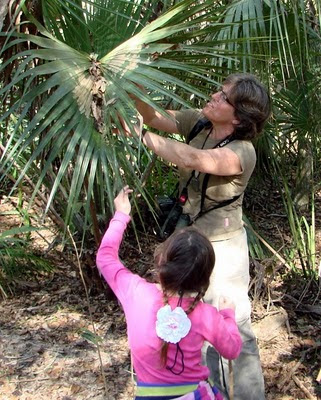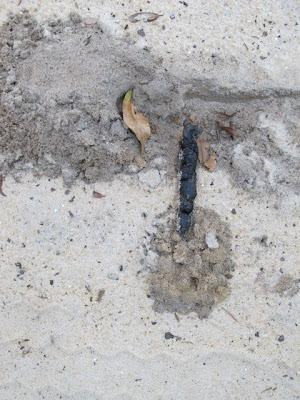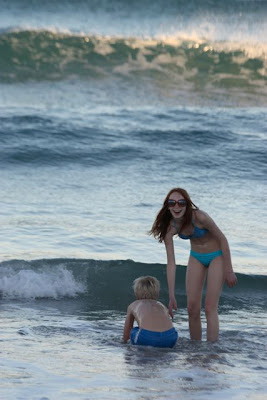About the first thing I noticed was some really scuzzy looking sabal palm fronds, and I wondered what might have scraped all the chlorophyll bearing layers off of them. So I turned the frond over and found an amazing network of frass and then tiny silken cocoons which I was too excited to photograph, wanting instead just to show it to the kids on the trip. Kids tend to get much more excited about natural history stuff than do most adults. No wonder I get along well with kids.
photo by Floridacracker
See that nasty pale area near the rachis? Well, the cocoons and frass networks were under the leaf.
So in Chimp CSI mode I dig around and carefully opened one of the silken cocoons, a process which fascinated the kids, and found this little culprit
which I could tell was going to eclose into a very small but long-winged moth. Which species, as yet unknown, but butterflies make chrysalis capsules, not silken cocoons, so we knew it was a moth. Cool!
Photo by Machele White from bugguide.net
We did some other things like percolation tests which we all enjoyed, seeing visible evidence that organic matter in soils (leaves, sticks and the like) greatly slows percolation in Florida's sand.
Bill Webb's photo of me and Liam, which he titled Science Chimp and Cub.
There was mistletoe in the oaks
growing in green balls in the leafless trees, reminding me of seeing the old black men with their car trunks full of mistletoe they'd shot out of the oaks in Tidewater Virginia, selling it on the old highway to Williamsburg, when I was a kid.
Looking down, there was Innocence, Houstonia procumbens (Rubiaceae), which reminds me of its close cousin Honesty, or roundleaf bluet (Houstonia coerulea). Only in albino midget form. I also like the idea of plants with just one name. Innocence. Honesty. Chastity. Cher.
Moving along the trail, we found fresh bobcat pugmarks, which about made my eyes roll back in my head. Bobcats are not nearly the huge deal in Florida that they are in Ohio. Oh gosh I love bobcats. I love the idea of bobcats. I have seen three wild bobcats in my life (first in Texas; second in North Dakota, and third about this time last year, 8 miles from our house!) So I could die now and still be happy. Here's my hand for scale. That's a big ol' pussycat.
And even better, a fresh bobcat log!
At this point I'm down on hands and knees trying to figure out how the earth got piled up near this turd with no visible scratch marks from the cat. Derr....I'm mumbling to myself when a voice comes from behind me, surmising that this is the sign of dung beetles working from below. Oh, now, I'm loving that, because we are short on dung beetles in Ohio. Lots of dung, not many dung beetles. Gotta do something about that.
And the voice belonged to...
Floridacracker! (pictured here with his candy-apple red, nattily spotless JEEP, a vehicular extension of his personality if I have ever seen one)
who made the trip over to the festival to meet me and the kids!
I am not sure I will be able to adequately convey how much it meant to me to meet this man at last, having enjoyed his creative output for years via his blog, Pure Florida.
In my next post, I will try.



























































